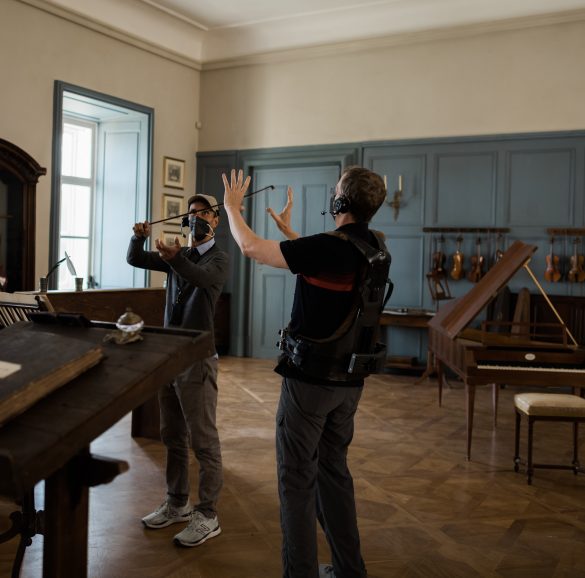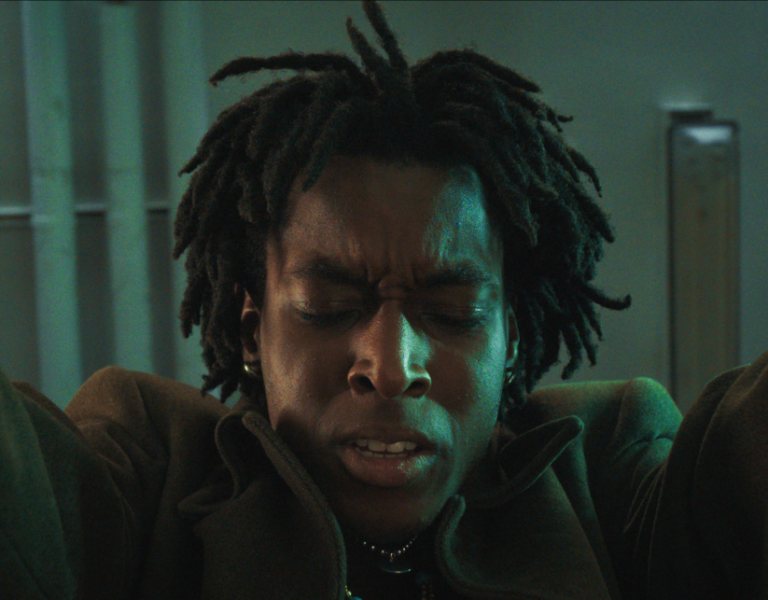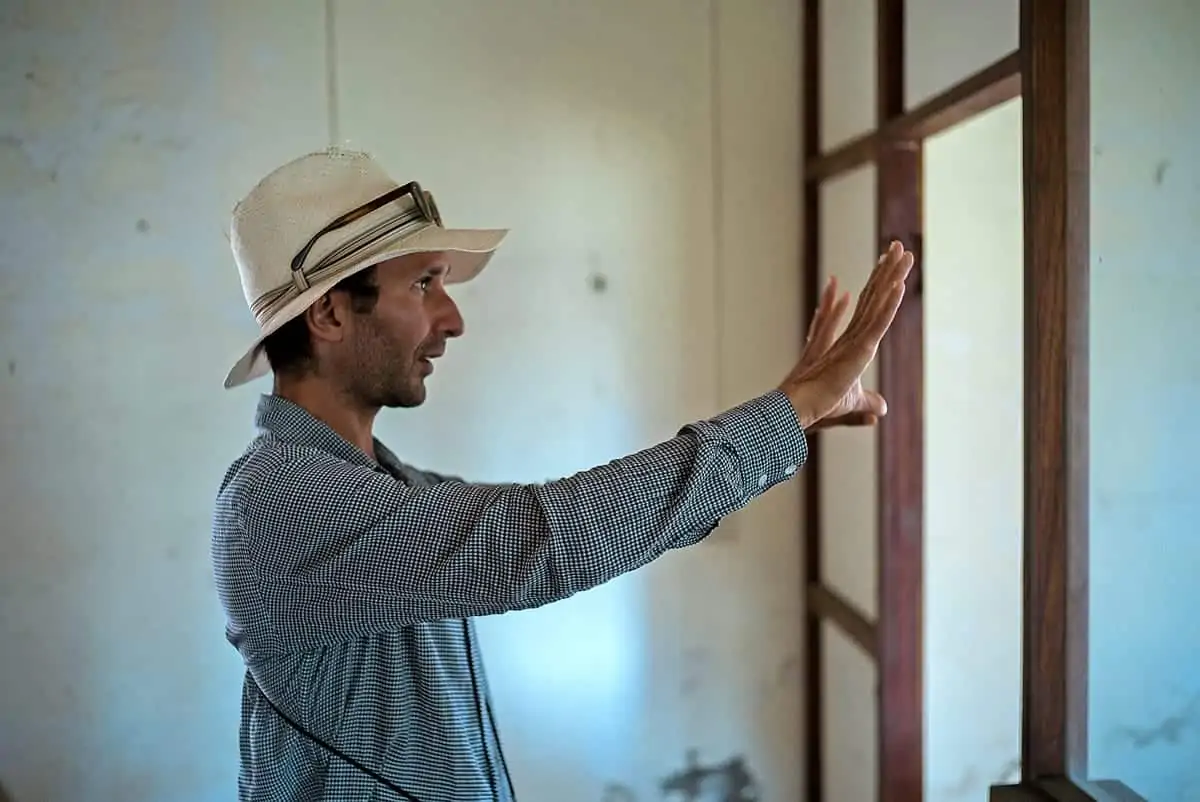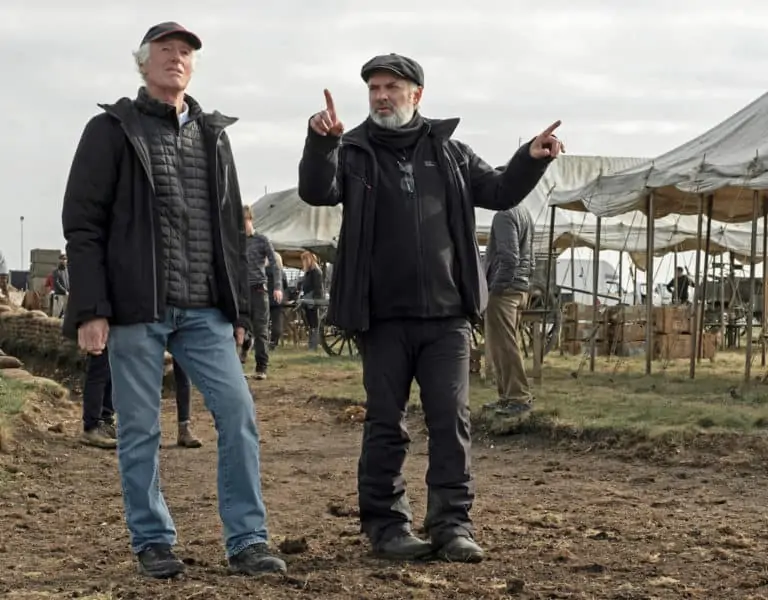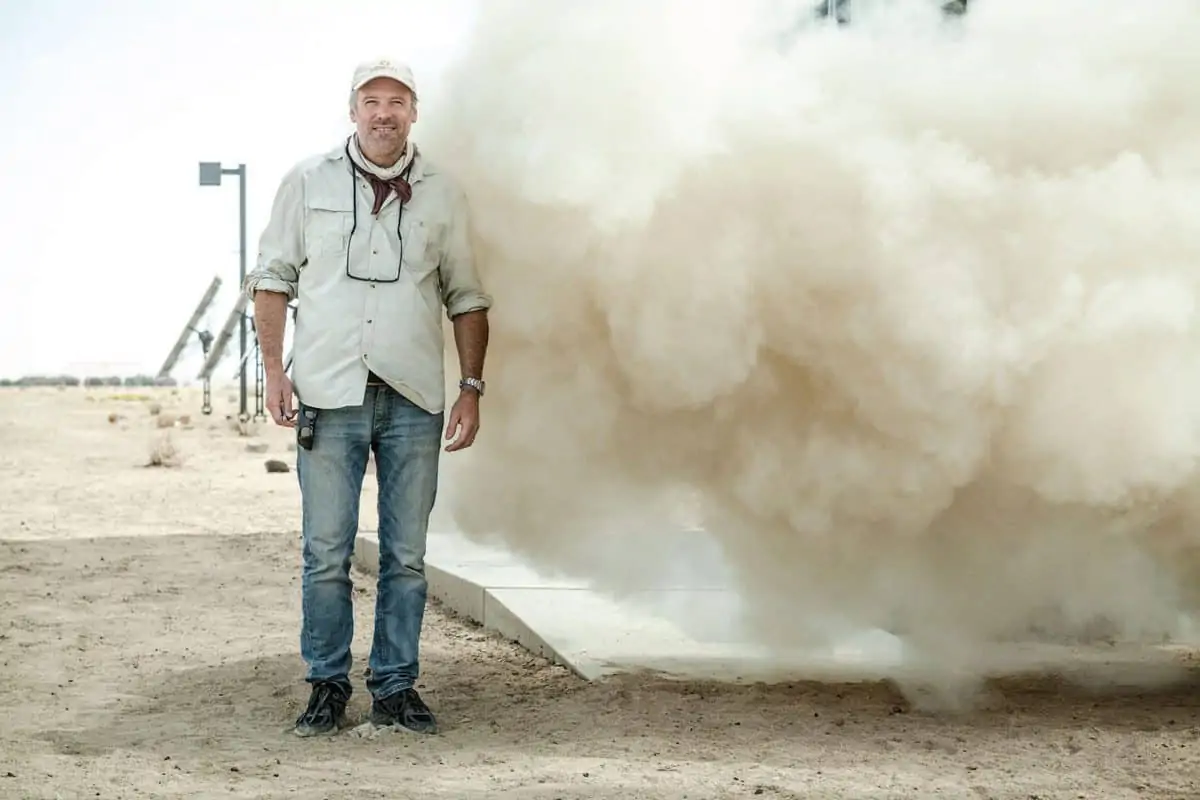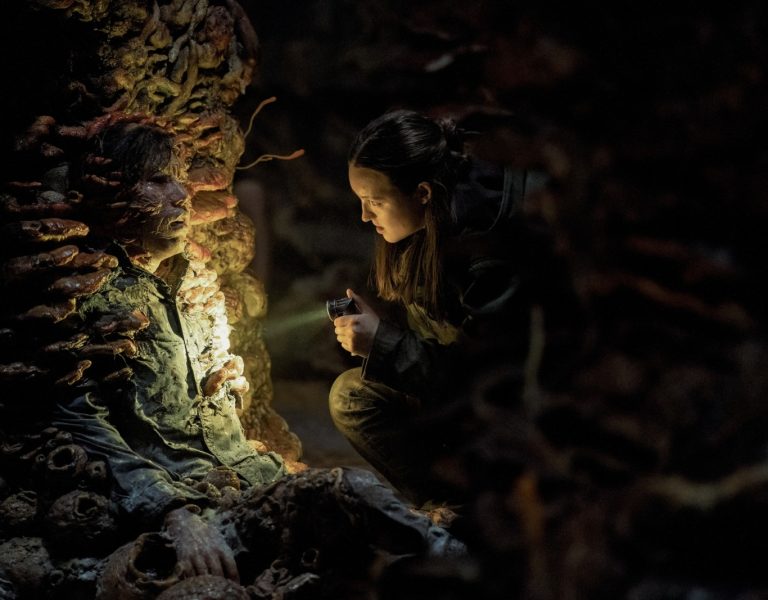Home » Features » Masterclass »
FROM DARKNESS TO LIGHT
Jess Hall ASC BSC reflects on how cinematographers can bring their own life experiences to their lensing for truly authentic storytelling.
Spring 2014, Highgate, London. I prepare to bury my father amongst some of his closest friends and fellow intellectuals at Highgate Cemetery. The soft spring sunlight enters the southern aspect of the chapel, striking the mahogany coffin situated in the vestibule. Filtered through stained glass centuries old and diffused via the morning mist, the light acquires a green, yellow hue. I carefully place the needle on the record, the chapel is infused with the mesmerising tones of Miles Davis’ “Blue in Green”. My father loved jazz: on a Sunday afternoon he would sit at the piano and play standards beautifully from memory, his large soft brown eyes gazing towards an infinite horizon long departed. “I don’t mind dying,” he once said to me, “as long as you play Miles Davis’ “Blue in Green” at my funeral.”

Spring 2021 in Prague and I receive the script for Chevalier, the story of Joseph Bologne, Chevalier de Saint-Georges, composer of operas, champion swordsman of Europe, knight of the French court, son of a plantation owner and a slave. As I listen to his Violin Concerto No.10 in G Major, the uniqueness of his composition resonates. Its exquisite tonality and expressive phrasing, the sublime technical execution balanced with a hint of playful experimentation, the murmur of another tempo. Deep within that sound I recognise an expression of internal longing for a place left behind. Like images music can express an emotion that is beyond words, as my father put it; ‘Miles Davis put his finger on my soul, and it never left.’ Perhaps this was the key that unlocked my creative approach to Chevalier. From the beginning I understood Chevalier. Like my father, he departed the blue-green vistas of the Caribbean to be educated in an elite European academy. Like myself, Chevalier was an artist of mixed heritage, inhabiting Fanon’s double consciousness the creative potential of which can be exponential, the works of Jimi Hendrix, Bob Marley, or Jean-Michel Basquiat stand as testament. On my first reading of the script, I had already grasped what Darius Khondji AFC ASC refers to as ‘The Big Bang’, the mood and soul of the film.

Chevalier’s bold and idiosyncratic modus operandi within a classical tradition inspired me to push boundaries. Along with producing an opus of six operas, several violin concertos, multiple symphonies and sonatas, Chevalier fought as a revolutionary, leading the first and only black battalion in the French Civil War. Musicologists suggest Chevalier expanded the conventional tonal range of the violin’s upper register and produced unique compositions for the string quartet that influenced Mozart. In an inverse cinematographic parallel I resolved to explore the capacity of the camera to register the lower end of the tonal curve. To probe deep into the shadows and reveal frequencies of light barely discernable to the human eye. This was not original – the challenge was not simply to get an exposure but to control the light and the image, to produce an aesthetic that was intentional and singular.
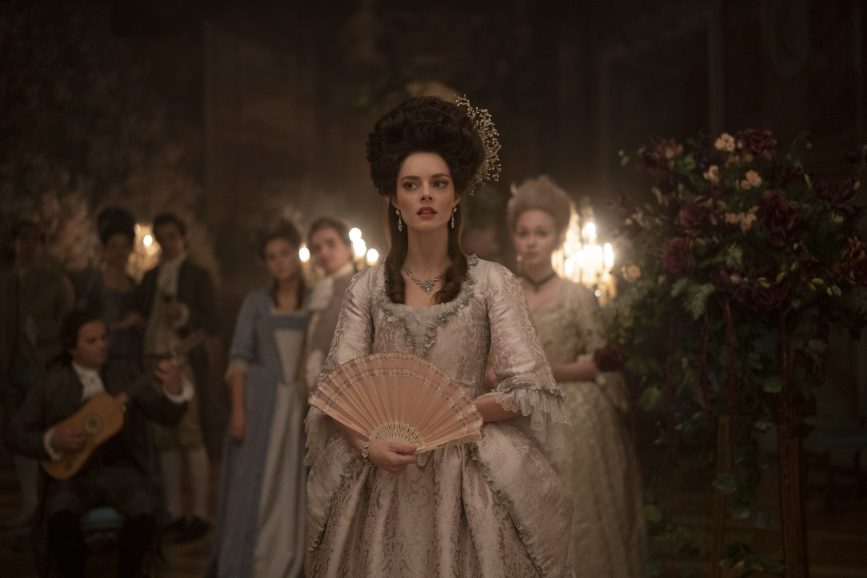
Looking to the past
Many lessons are learnt from history, there are not many questions that have not been asked by great filmmakers of the past. John Alcott BSC’s prodigious work on Kubrick’s Barry Lyndon lodged deep in my subconscious, particularly the impression of candlelight illuminating Marisa Berenson’s face. Despite using NASA lenses with a 0.7 aperture and an adapted non reflex Mitchell 35mm camera to work at extremely low light levels, what I recalled was not the darkness but the light. In my quest, skin was a preoccupation and Chevalier’s should emanate, glow luminescent, mercurial. He was groundbreaking, fearless, maestro, lover, revolutionary. I would use reflectivity to enhance vividity, extract colour complexity from the darkness. The American painter Kerry James Marshall states, ‘You have to demonstrate that black is richer than it appears to be, it is not just darkness but a colour.’
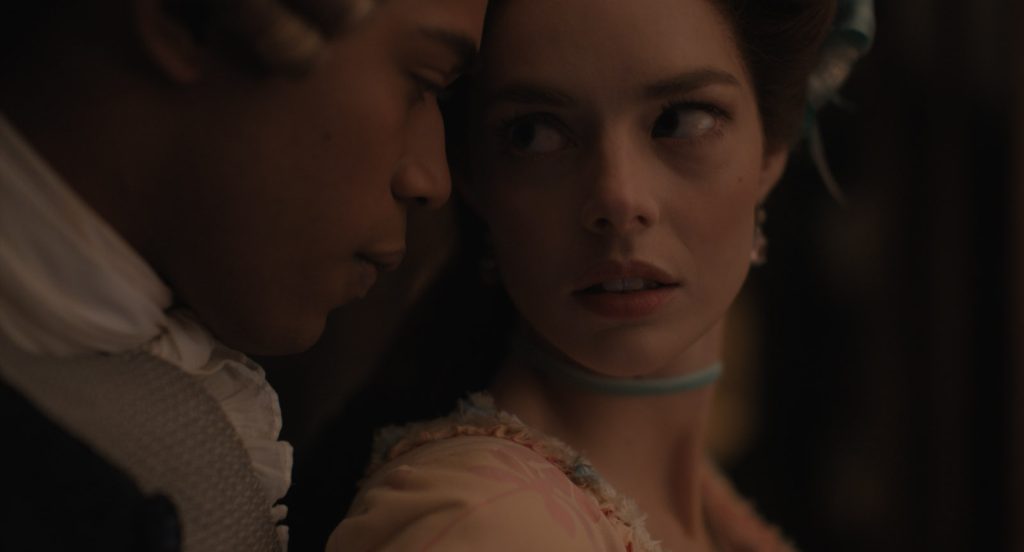
Music is movement, a series of evolving movements, change being the only constant. Conceptually in my process form follows function, thus a courageous, somewhat restless, and elegant approach to camera movement was essential. Weight and lightness, in harmony and dissonance with the score. Stephen Williams favoured a more subjective character to the camerawork, prioritising long, developing shots over conventional coverage. To facilitate this, I would need to light large historic spaces using practical sources. In 18th-century terms, this meant candlelight for night interiors. Kubrick’s Barry Lyndon used a similar approach but applied a largely static, tableau and proscenium approach to composition. I intended my frame to evolve with the music but now faced an immense technical challenge, ambitious camera movement at extremely wide apertures.
A collaboration in customised optics with Dan Sasaki at Panavision beckoned. Prior to this we had worked together to produce two original lens sets for Ghost in the Shell and WandaVision in addition to various customised anamorphic lenses. When I spoke to Dan about my ambitions for Chevalier his excitement was palpable: ‘So you want to reach for the Holy Grail of Sub T1,’ he said with a wry smile. The first test utilised side-by-side Alexa LF and Sony Venice cameras and a 50mm T0.9 prototype to cover a 1:1.85 aspect ratio. I shot wide open with a single candle, the Venice rated at 2500 ASA and the Alexa at 1600 ASA. A couple of days later I got a call from Hugh Whittaker at Panavision London (who would be supplying the camera package for our Prague production) curious about what exactly I was up to. I sent him the test to view, he was very impressed and gave the project his blessing. Dan began construction of six ultra-high-speed lenses – 28, 35, 40, 50, 75 and 100mm – with maximum apertures of T0.9-T1.2.
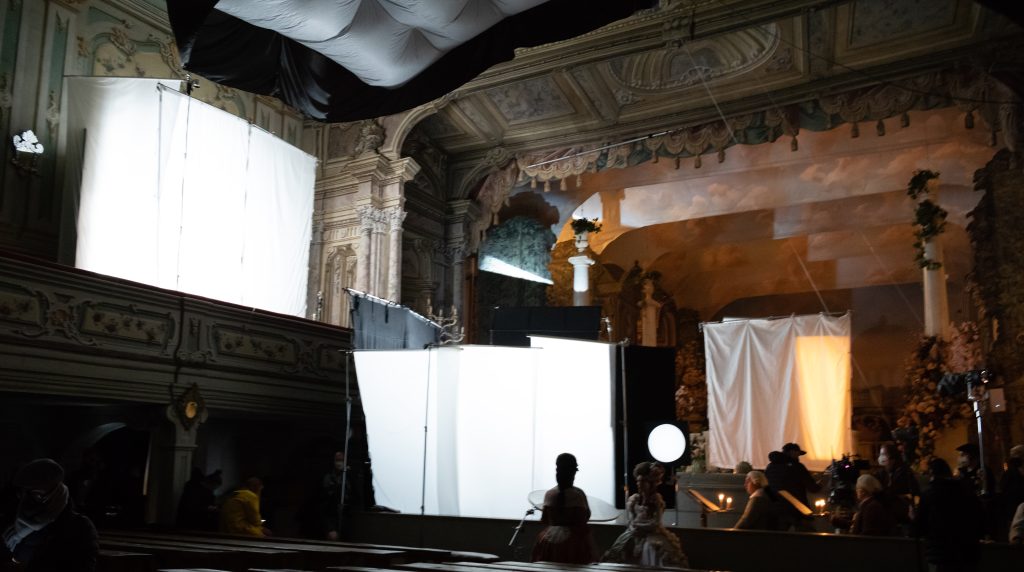
Focusing on lenses
The customisation of optics for Chevalier relied on formulas co-developed over multiple collaborations between Sasaki and I which he refers to as ‘specific to me’. Shooting large format at T0.9 reduced the depth of field to an infinitesimal range. In perhaps the most significant intervention Sasaki lowered the MTF (modulation transfer function) of the lenses to create a greater spread over a greater area ensuring that that lens was never perfectly sharp in one place. This created a gentle transition between relatively sharp and out of focus areas providing the appearance of more depth by utilising the deep field effect to create an ethereal sharpness. Such a strategy was essential as it allowed me to employ the camera movement I desired at extreme apertures whilst retaining the perception of sharpness. To combat the deficiency of colour in the digital sensor chromatic aberration was induced to provide a subtle tinted halation around the highlights. In a fortunate accident, forgetting that an inversion would occur (as what appears in the lab is reversed through the lens) this halation appeared subtly tinted blue/violet instead of the intended red. This mistake parlayed into a unique look when during testing I decided it was an asset, providing colour contrast within the palette to amplify the richness achieved by the presence of a complementary colour.
In a special challenge I requested a macro lens that could focus on a single musical note. The concept was to capture the mind’s eye of the composer in the writing process, to literally see the notes emerge into focus, to form in real time as Chevalier imagined them. Sasaki designed a specialty 90mm micro lens with a small form factor that executed the shot perfectly. The conflict between the inherent sharpness of the Venice sensor and the softness imposed on the image through the optics had an intentional and alchemic effect. On previous projects I had proved via comprehensive testing that the theory of oversampling led to rich results. The origin of this for me was based in my photographic work shooting and printing from large format 10×8 plate cameras. Thus, I resolved to shoot at maximum resolution on the Venice and set about to counterbalance this using the various tools at my disposal. If lens was my eye, the light was my paint and I applied it carefully.
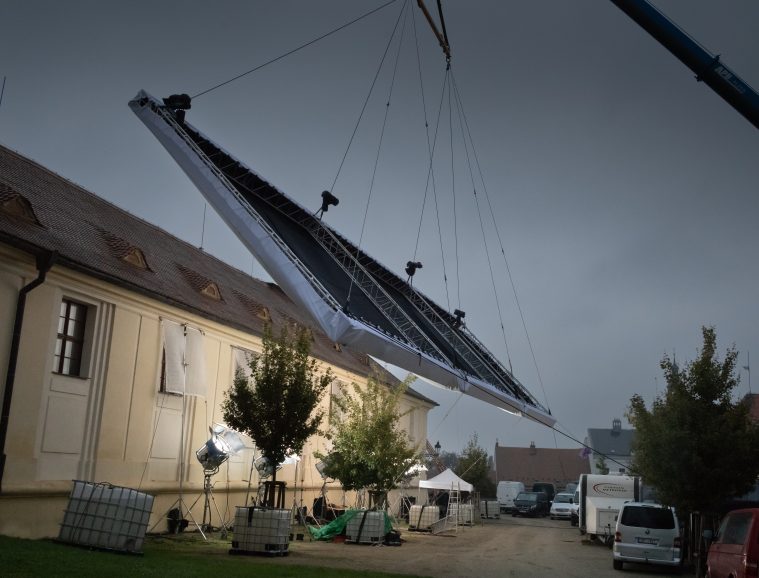
From cellist to camera operator
The precise syncopation, interpretation, and expression of camera movement in relation to music required a camera operator with specific expertise. After exploring candidates from across three continents I convinced Geoff Haley to join me. Geoff’s history as a concert-level cellist placed him as the perfect collaborator. His command of the Steadicam not only enabled easy movement across three axes but placed the control of this with a single human, allowing the camera to react spontaneously in the moment. For some sequences, using the pre score, camera movement was syncopated to within the accuracy of a single note. Sound editing to tighten our sequences was even made possible in pre-production. During shooting I was frequently working at light levels below one foot candle. In one memorable moment I questioned if I was pushing things too far when one of the musicians politely requested ‘a little more light’ because several of the 24-piece orchestra ‘could not read the score’.
The masterful Thomas Gainsborough and the French painter François Boucher laid the foundation of my colour palette. Jazz photographer William Claxton’s depiction of expressive movement in performance demonstrated the impact of capturing Bresson’s decisive moment (even if the light was not perfect). Roy DeCarava’s intimate portraits of Harlem musicians in natural light and his extraordinary use of the lower end of the tonal scale was inspiring. My approach to cinematography attempts not to repeat or imitate but with each project to create a camera syntax appropriate to the story. In addition, I look to the personal, what can bring from my own life experience that gives insight, depth, and resonance to the material. In this respect Chevalier provided a wonderful opportunity.
